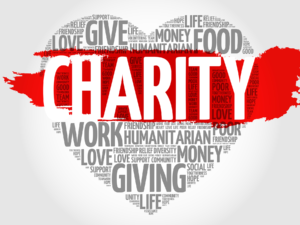Charitable Giving During a Crisis – What to Do and Not to Do
April 1, 2022
To Inform:

When a crisis hits, whether through war, natural disaster, pandemic, or other triggering event, many people feel a natural inclination to help those who are most affected. This topic feels pressing today amid the conflict between Russia and Ukraine, and also the tornadoes in New Orleans. We all want to help, so let’s examine how our efforts can be most effective.
The Chronicle of Philanthropy recently published an article on what types of aid make the biggest impact. What’s the best way to help? The answer is complicated.
What makes the biggest impact?
In virtually every scenario, the fastest and surest way to deliver support efficiently is to donate – and specifically to make an unrestricted donation of cash. Financial donations arrive quickly and can be used for an organization’s greatest needs, which might range from purchasing a specific food item to round out their food pantry supplies, to buying an emergency generator that keeps the lights on, to paying for the gas needed to drive medical vehicles to remote regions. Cash donations let nonprofits be nimble.
They also allow nonprofits to take advantage of economies of scale. For example, food banks can buy food at wholesale prices. The price we pay for a box of cereal at Kroger might allow a food bank to buy two boxes of cereal. More Cheerios = more children receiving breakfast every day.
With regard to the current crisis in Ukraine, lots of people ask how they can donate to support relief efforts. Check out recent insights from the Council on Foundations and ABC News that highlight options.
Other ways to help
Depending on the type of crisis that is happening, the needs on the ground can vary widely. Contacting organizations who are involved with the crisis response is a great place to start to find ways that you can contribute beyond just financial donations. Also, community foundations can often identify the organizations doing the best work during a crisis. Use local resources such as The Columbus Foundation, The Catholic Foundation, The Jewish Foundation, or other surrounding community foundations for direction with your charitable giving.
What NOT to do during a crisis
As the Chronicle of Philanthropy notes, there is a well-known phenomenon in behavioral science known as “action bias” which leads people to want to do anything rather than doing nothing at all. However, poorly thought out actions can actually make a problem worse rather than better. Let’s look at some of the counter-productive actions that commonly happen after a disaster:
- Giving physical items. Physical items may create a logistical challenge of transportation, sorting, and distribution. Disaster relief workers often call this the disaster after the disaster when truckloads of used clothes, toys, food, medicine, pet supplies, and other goods show up at the affected location. If there aren’t organizations and volunteers in place to receive these donations, they can actually hamper relief efforts and ultimately enter the landfill. If you consider giving physical items, it is best to make sure the organization you give such items to has the resources and infrastructure to fully deploy such resources.
- Bans and boycotts. Bans and boycotts, when used strategically, can be effective strategies for registering your displeasure with what is happening in the world. However, in cases like the Russia-Ukraine conflict, it’s easy to want to simply boycott anything that seems Russian. Boycotting vodka or refusing to see a Russian performer might feel like you’re making a positive impact, but these actions can often end up punishing individuals and organizations who have nothing to do with Russia and/or may not support Russia’s actions. Make sure that the ban/boycott you’re participating in is actually having the desired effect.
- Falling for scams. Let’s face it, scam artists are a constant scourge that we all deal with and disasters tend to bring scammers out in droves. Scammers thrive on urgency, which reaches a peak during a crisis when good-hearted people act quickly. Make sure that you only use well-established, reputable organizations that are known and trusted to do the kind of work that they claim to do.
Conclusion
When a crisis strikes, our common human bond often demands that we act. When you feel the pull to help out, reach for your checkbook or credit card first and give to organizations that are positioned to do the much-needed relief work. Do your research before giving donations of physical items that require lots of logistical work to distribute and watch out for ineffective ban/boycotts or scams. Reach out to well-known organizations to find out other ways that you can help and use local resources like community foundations as guides for your charitable giving.
 Written by Jake Martin, Client Advisor
Written by Jake Martin, Client Advisor